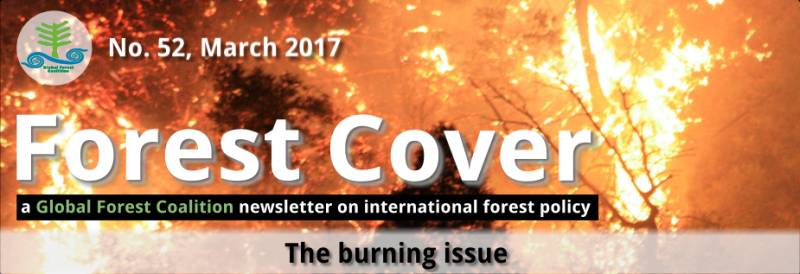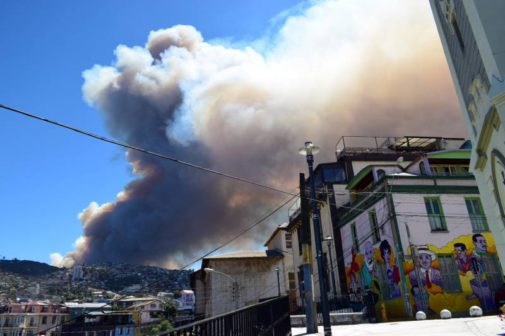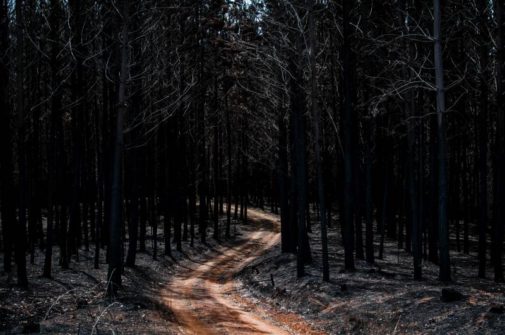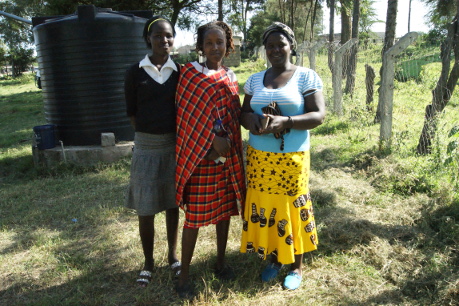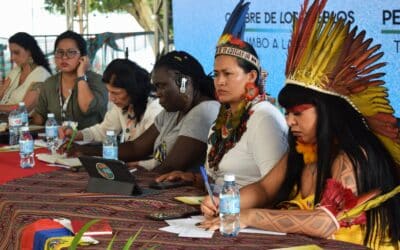Welcome to Forest Cover No. 52, the Global Forest Coalition newsletter that provides a space for Southern and Northern environmental justice activists to present their views on international forest-related policies.
In this 52nd edition of Forest Cover we focus on a truly burning issue, the loss of the world’s forests to fire, not only because of our changing climate, but also because of the increasing prevalence of highly flammable monoculture tree plantations that dry soils out, the deliberate burning of forests to create croplands and pastures for livestock, and plans to turn vast amount of lands over to growing trees to burn in industrial quantities to generate electricity in the Global North.
Given all this, GFC expresses its shock and dismay that FAO has chosen to transform this year’s international day of forests, on 21 March, into an international day of forests on fire, by focusing on forests and energy. This combined with FAO’s continued insistence on including plantations in its definition of forests (meaning that the two are interchangeable in FAO’s eyes), is a gift to industrial forestry that will contribute to the continued depletion of the world’s forests and biodiversity. Run, forests, run!
You can download the print version or read the articles individually below. To subscribe to the newsletter, please write to gfc@globalforestcoalition.org.
Download the print version (web quality) or (low resolution PDF)
Contents
The FAO’s international day of burning forests and tree monocultures
How EU bioenergy policy fuels wildfires around the world
Chile’s forests are on fire: who is responsible?
What’s at Steak: Forest fires and livestock production in Bolivia
The need for greater honesty in the timber industry
Women and the conservation of real forests: emerging recognition in the CBD and UNPFII
Community Conservation on a Burning Planet: How Climate Change undermines the Resilience of Communities in Africa
The FAO’s international day of burning forests and tree monocultures
By Rachel Smolker, Biofuelwatch, USA
The UN Food and Agriculture Organization (FAO) established the international day of forests in 2012. While the 2016 theme was ‘forests and water’, in 2017 the theme is ‘forests and energy’. That choice is simply atrocious in light of the escalating push for wood bioenergy, which in the industrialised world includes burning trees as an alternative to coal, and converting wood into automobile and jet fuel. Given the massive demands for energy in the industrialised world, promoting the use of forests as fuel is dangerously misguided—especially as we are simultaneously aware of the key role of forests in maintaining livable conditions for people and all other species on earth.
The promotion of forests as an energy source by FAO seems to indicate that the organisation failed to even notice the ongoing debates about the impacts of wood bioenergy on biodiversity, human health and climate, that have been raging for at least a decade. Just for example, see Global Forest Coalition’s report Wood Bioenergy: Green Land Grabs for Renewable Energy, or the recent Chatham House report on the environmental impact of biomass for power and heat. It is now a widely accepted fact that burning wood for electricity is dirty and inefficient, and requires such massive quantities of wood that it is a major contributing factor to deforestation even at the current scale, which contributes only a very small portion of the energy consumed in the industrialised world. The unsustainable scale of industrial wood bioenergy is well illustrated by the rapid growth of the wood pellet industry, exporting millions of tons annually from Southeastern USA to the UK, where subsidies for renewable energy are generously provided for conversion of coal plants such as the very large DRAX facility. Renewable energy should not come at the expense of forests!
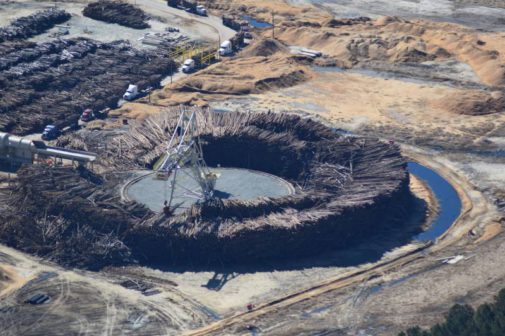
This pellet plant in the Southeastern USA exports pellet to the UK’s Drax power station. Dogwood Alliance
The FAO offers a short video as promotion of their ‘forests and energy’ day on 21 March 2017. This overtly promotes forests as a source of fuel and raw materials, describing forests as “nature’s powerhouse” and pointing to the fact that people have used wood for energy for thousands of years. Indeed this is the case, and many around the world still rely primarily on wood for cooking and heating energy. Meeting basic needs with what is locally available is essential to livelihoods, but it is an entirely different to fueling commercial and industrial-scale energy uses in northern, industrialised countries. That distinction is key, but FAO completely fails to identify it, dangerously conflating the two different contexts, as if commercial and industrial-scale wood bioenergy is a natural extension of traditional, historical uses.
In so doing they carry us down a slippery slope, not unlike the trickery that is played with the terminology used to define the word ‘forest’ itself. FAO has long used (in their Forest Resource Assessment reports) a definition of ‘forest’ that fails to adequately distinguish between real, biodiverse, native forest ecosystems, and tree plantations. They recently added the term ‘planted forest’, which further confuses matters by using the word ‘forest’ specifically in reference to plantations, which generally consist of a single species, often not native, planted in rows for ease of cultivation and harvest, sprayed with agrichemicals, and designed to be ‘purpose grown’ as fast as possible, with the area to be cut and replanted again, and again, and again. Tree plantations bear more resemblance to a Monsanto or Cargill-style soya plantation than a real forest.
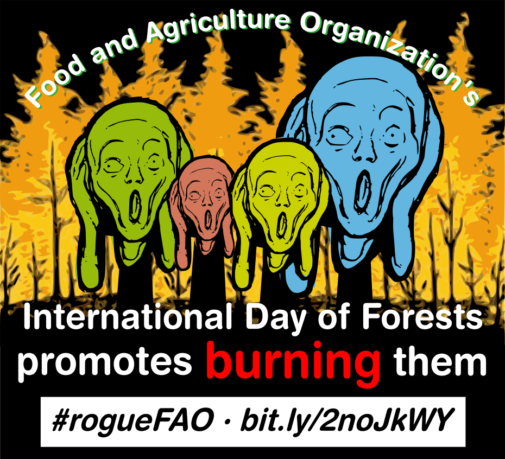
That the FAO is encouraging this view through its ‘international forests and energy day’ and the ongoing obfuscation about what a forest is or is not, is no more than irresponsible pandering to the insatiable life-destroying greed of commercial forestry interests and their rhetoric about ‘sustainable management’ as a moniker for industrial monoculture plantations.
How EU bioenergy policy fuels wildfires around the world
By Simon Fischer, Climate and Land Use Policy Advisor, Global Forest Coalition, Germany
Worldwide, an increase in wildfires can be observed. In 2016, Peru, Canada, the USA, Portugal, Israel and India, among others, experienced major wildfires. As reported by Carolina Lagos, Chile has recently been experiencing the worst forest wildfires in history, which destroyed more than 600,000 hectares of forest. Global warming and consequential droughts are pinpointed as key drivers of this increase in both the numbers and scale of wildfires. However, this is only half of the truth. Large-scale tree plantations play a major role as well.
Plantations usually consist of monocultures of alien and/or invasive species, which are often introduced in areas formerly covered by native forest. However, monocultures are quite different to forests. They lack biodiversity, and don’t have the same ability to maintain hydrological cycles and microclimates. [1] Furthermore monocultures often consist of ever-green species such as pine or eucalyptus, which take up water from the ground the whole year round leading to extremely dry soils. An expansion of monoculture tree plantations can be observed worldwide causing the replacement of natural ecosystems and native forest, the loss of livelihoods of local communities, water depletion, and soil and water pollution due to the use of agrochemicals. The fact that they dry out soils triggers wildfires destroying forests as well as plantations.
Frighteningly, this is facilitated by the fact that the United Nation’s Food and Agriculture Organization (FAO) still counts plantations as forests. Demand for wood is mainly created in the Global North, and is primarily for timber, charcoal, logs and pulpwood. However, demand for wood pellets for biomass power plants is also increasing rapidly. The EU is a key driver of demand. As part of last November’s package of energy measures, the European Commission proposed a strategy to meet the post-2020 climate and energy targets: The EU’s goal is to achieve a 40% reduction in greenhouse gases by 2030, as stated in its Nationally Determined Contribution (NDC), which is part of the Paris Agreement. The EU’s NDC also includes a 27% target as a minimum share of renewable energy in the total EU energy mix by 2030.
Currently, however, the majority of the EU’s renewable energy —around 65%—is coming from bioenergy, [2] which is mainly used in the heating, energy and transportation sectors. To give an idea of the scale of use, Drax, the world’s largest biomass power plant, which is located in the UK, burned around 12 million tons of wood in 2015. This is one million tons more than the total amount of wood produced annually by the UK itself. Drax runs on imported wood pellets mainly from the Southern US. [3]
Bioenergy is formally listed in the EU’s renewable energy directive (RED). Sources mentioned under the directive are classified as being renewable and therefore carbon neutral. However, this is based on flaws and simplified assumptions. It is assumed that the carbon emissions released when biomass is burned are immediately taken up by newly planted trees. But trees take 20 to 400 years to grow and the older the tree the more carbon is being stored. It is argued that tree plantations, which are increasingly producing wood for EU biomass power plants, can grow and be harvested more quickly, but it still takes years to grow the trees. As pointed out in a report just released by Chatham House [4], due to the short period these trees are growing they can only take up a fraction of the carbon stored in hundred-year-old trees.
By mistakenly defining bioenergy as a renewable energy source, the EU will actually fail to meet its climate targets, whilst creating a gigantic and unnecessary demand for wood. A 27% share of the EU’s total energy implies an enormous amount of biomass. And as biomass needs a vast amount of space to grow, the amount of land needed to meet that demand makes it a utopian prospect anyway. [5]
In the meantime, FAO celebrates the International Day of Forests 2017 with the slogan “The Forest: nature’s power house”. By branding bioenergy as carbon neutral, the EU, FAO and others risk institutionalising environmental degradation on a vast scale by replacing forests with monocultures. One can only hope that realisation will take place concerning the devastating effects that decisions made in Brussels and elsewhere, under the cover of sustainability, have on people and forests elsewhere.
[1] Ellison et al. (2017). Trees, forests and water: Cool insights for a hot world. Global Environmental Change, 43, 51-61. DOI : 10.1016/j.gloenvcha.2017.01.002, http://www.sciencedirect.com/science/article/pii/S0959378017300134
[2] http://www.birdlife.org/europe-and-central-asia/policy/bioenergy
[3] http://www.biofuelwatch.org.uk/axedrax-campaign/
[5] Due to limited data availability there are no numbers on the total harvested forest area: see https://www.foeeurope.org/sites/default/files/resource_use/2016/land_under_pressure_policy_briefing.pdf
Chile’s forests are on fire: who is responsible?
By Carolina Lagos, Viento Sur, Chile
It is the summer of 2017. In Chile more than 600,000 hectares [1] of scrubland, plantation forests, agricultural land, native forests and homes have been devastated in what is thought to be the worst episode of forest fires in Chile’s recent history. It has affected thousands of people, and, tragically, eleven people have died.
Financial losses have been steep as well, but, more devastating than that is the extensive loss of Chile’s biological and ecological patrimony, which has reached crisis proportions. For example, most of the last remaining stands of the endangered Ruil beech tree (Nothofagus alessandrii) and the ecosystem linked to it have virtually disappeared. These losses are particularly critical in Chile because of the high level of endemism. [2]
Seven weeks after the fires began it seems that the main threat has passed, and the international aid teams that arrived to help have left the country. But as I write this article, in the month of March, there are still more than 60 fires burning, and it’s necessary to understand what has happened in order to prevent its repetition in the future.
It is well known in Chile that it is rare for forest fires to occur naturally (they might, for example, be caused by electric storms). In more than 97% of cases [3] forest fires are triggered by human activity, accidental or otherwise. Indeed, experts have concluded that forest monoculture plantations are the main cause underpinning this tragedy. For more than forty years Chile has implemented economic development policies that have favoured an industrial forest model based on the use of exotic species that are highly inflammable, such as pines and eucalyptus. Government after government has ignored warnings about this from experts, organisations defending the environment, communities affected by the forest industry, and victims of drought. They have also turned a blind eye to biodiversity loss, forest destruction, and the various ecological problems that forest plantations cause.
In particular, the authorities have failed to ensure that plantations are kept away from populated areas, roads and water courses. This has enabled the establishment of large connected areas of dense forest monocultures—a perfect and effectively limitless fuel—dangerously close to housing and transport networks.
This summer saw that fuel ignited. Worst hit was Chile’s central zone, where exceptional climatic conditions were experienced. Weeks of extremely high temperatures, combined with dry and windy weather [4], created the ideal conditions for the conflagration. This follows on from an extensive period of drought that began in 2010 and still continues. Record temperatures were recorded in various cities in January, including Santiago (37.4°C), Quillón (44.9°C), Cauquenes (43.9°C) and Chillán (41.5°C). So far these conditions are considered exceptional, but it may be that we will see them recurring as global climate change bites and the planet heats up.
Contemplating this sad scenario I ask myself whether, considering the threat of climate change, it is acceptable for the forest industry to continuing issuing certificates attesting to the quality of their operations, when it is failing to implement the adequate security standards that might have helped to avoid this tragedy? Moreover, does it really make sense to pay for carbon credits in a world where tons of carbon are being released into the atmosphere every year because of forest fires? After all, the value of carbon credits is based on the continued existence of the trees they relate to. In my opinion this logic does not make sense.
[1] http://www.conaf.cl/situacion-nacional-de-incendios-forestales/
[2] http://www.mma.gob.cl/librobiodiversidad/1308/articles-45159_recurso_2.pdf
[3] http://www.scielo.cl/scielo.php?script=sci_arttext&pid=S0717-92002016000100014
What’s at Steak: Forest fires and livestock production in Bolivia
By Pablo Solón, Fundación Solon, Bolivia
A large part of Bolivia’s territory, including forests, is burned deliberately every year. Fires are started to ‘recover’ pastures for livestock grazing, and to clear areas of forest and vegetation (including land used for agricultural and livestock purposes, which may be scrublands, grasslands, bushes or wooded areas). The practice, which is known as ‘chaqueo’, happens with little or no control or planning and contributes to high levels of deforestation in Bolivia (some 80% of which occurs illegally). [1] Last year, the government even issued a decree that increased the area that can be deforested by small farmers from 5 to 20 hectares. [2]
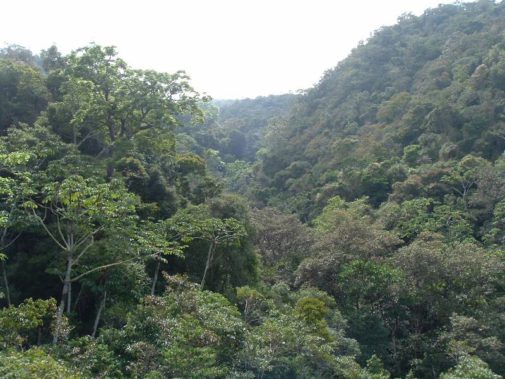
Bolivia’s diverse forests are under threat from livestock ranching and deliberate burning. US Fish and Wildlife Service/Flickr
‘Chaqueo’ is an old and inexpensive practice that is easy to apply and has the advantage of setting micronutrients into the soil, ensuring good harvests for a few years. [3] However, ‘chaqueo’ has many disadvantages with the soil losing its fertility and crop yields subsequently falling off rapidly. The producer enters a vicious circle in which they must continue burning and deforesting to stay productive. The result is soil erosion and desertification.
On a particularly dry year with strong winds, like last year, the burning of pastures causes fire to spread uncontrollably, affecting the same breeders and farmers who started them, burning their cattle and barns, wildly consuming the forests, and filling the air with soot, which is causing acute respiratory infections and claiming human lives, and is even deposited in the Andean glaciers. In short, forest and grass fires are contributing to ecological collapse.
According to the Bolivian government’s ‘Technical Report of Hot Spots and Burnt Areas’ nearly two million hectares were burnt in 2014. [4] This is the equivalent of half of Switzerland being destroyed by fire, or all of El Salvador. In 2015, the Authority of Supervision and Social Control of Forests and Land (ABT) counted 51,419 ‘hot spots’ throughout the country. [5]
In 2016, the situation deteriorated further, as the number of hot spots doubled. It was one of the worst years for fires and deforestation since 2010. An official report is still not available, but the news and testimonies from people affected by the fires are tragic.
Going back to the data available for 2015, 41% of the heat sources that were recorded were located on land used for livestock, 15% on agricultural land, and 39% on wooded land including forest areas under permanent production, forest reserves and protected areas. The publication ‘The context of deforestation and forest degradation in Bolivia’ [6] also reports that livestock farming has now become the most significant driver of deforestation in the country. Between 1992 and 2004, livestock was responsible for 27.4% of Bolivia’s deforestation. But in the period from 2000 to 2010, its contribution to the loss of forests rose to 51.9%; and according to preliminary data for the period 2005 to 2010 it becomes clear that the livestock sector’s share of forest destruction now seems to have reached 60%.
Soy production in Bolivia is for export. Since the 1980s, Bolivia has experienced rapid deforestation because of medium and large-scale production. This dynamic was stimulated in part by Brazilian investors who took advantage of the low cost of land and tariff preferences that were established under the Andean Community. Something similar could happen with the production of meat for export in the coming years, with further Brazilian investment anticipated.
Last year, all these factors plus the increase in temperature due to climate change and the phenomenon of El Niño created a catastrophic situation for Bolivia’s forests. This is not the first time that this has happened in Bolivia. In 2010, for example, forest fires also went out of control. What is new is that in many regions and cities there was also a very significant drought. In the city of La Paz, more than one hundred neighbourhoods had drinking water for only eight hours every three days. Even now, after heavy rains, the provision of water is not yet back to normal in many neighbourhoods.
Water shortages in urban areas have triggered a discussion in Bolivia about the importance of forests for rain. People have become much more aware of the fact that if you burn and destroy forests there will be less rain in the highlands and less water for people to use. This is now an issue for public debate.
The reality is that there is more and more scientific evidence linking forests, rain and drinking water provisions. “As the Amazon rainforest disappears, rainfall falters over a much wider area” says a study run by Dominick Spracklen of the University of Leeds. [7] That is because air passing over forests picks up moisture given off by trees and plants, fuelling rains. When those trees disappear, so does some of that rain. “What we found was this really strong impact—air that travelled over a lot of forests brought a lot more rain than air that didn’t travel over very much forest” said Spracklen.
In Bolivia the problem of drought has brought the issues of deforestation and forest fires to the forefront, raising awareness and the consciousness of the people, both in rural and urban areas. The challenge at hand is to contribute to this understanding and propose policy changes to stop deforestation, forest fires and unsustainable livestock production.
Pablo Solón is the Executive Director of Fundación Solón, Bolivia. Fundación Solón contributed a case study on livestock production in Bolivia for the Global Forest Coalition report “What’s at Steak?”. The full report and country case studies can be downloaded from the GFC website.
[1] Autoridad de Fiscalización y Control Social de Bosques y Tierra 2013, Informe anual 2012. Santa Cruz, Bolivia: ABT.
[2] http://www.derechoteca.com/gacetabolivia/ley-no-741-del-29-de-septiembre-de-2015/
[3] Montaño J 2003, Fuego en el pantanal. Incendios forestales y pérdida de recursos de biodiversidad en San Matías-Santa Cruz. PIEB.
[4] Ministerio de Medio Ambiente y Agua 2015c, Memoria Técnica de Monitoreo de focos de Calor y Áreas Quemadas en la Gestión 2014. Bolivia.
[5] Autoridad de Fiscalización y Control Social de Bosques y Tierra 2015, Boletín Focos de Calor, (mar – dic, 2015). Bolivia.
[6] Müller R., Pacheco P., y Montero JC 2014, El contexto de la deforestación y degradación de los bosques en Bolivia: Causas, actores e instituciones. Documentos Ocasionales 100. CIFOR.
[7] https://www.scientificamerican.com/article/cutting-down-rainforests/
The need for greater honesty in the timber industry
By Wally Menne, Timberwatch, South Africa
Is the timber, pulp, packaging, paper and wood pellet industry genuinely attempting to reform itself, as is often claimed, or is it just continuing to green-wash its image, and misrepresenting the horrific realities of its social and environmental impacts as certified ‘best practice’?
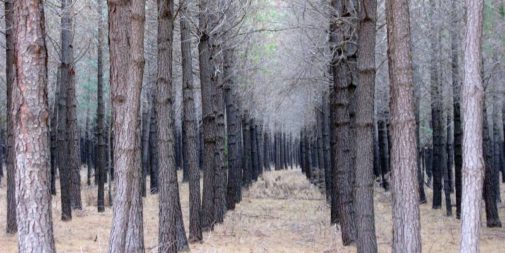
A former grassland in South Africa, now devoid of biodiversity, but guaranteed to burn like crazy! Wally Menne
Just over twenty years ago, in 1996, everything changed when the late Ricardo Carrere of the World Rainforest Movement (WRM) and the Corner House’s Larry Lohmann published ‘Pulping the South’ [1], providing a shocking overview of how rapidly the Northern-based pulp and paper industry was expanding into the South. The book helped to trigger increased concern among civil society groups, and in June 1998, WRM convened a meeting of 21 representatives of NGOs from 14 countries around the world, in Montevideo, Uruguay, from which emerged a joint statement, the Montevideo Declaration [2], and the launching of the International Campaign against Monoculture Tree Plantations.
The meeting was an eye-opener for all present, many of whom had not realised that the problems with tree plantations they had encountered in their own countries were in fact widespread, including in South America, Africa and Asia. Then, in August 1999, WRM published a crucial briefing note written by Ricardo Carrere, titled ‘Ten replies to ten lies’, which succinctly described how tree plantations were being misrepresented to the world. [3]
Since then, members of the international plantations campaign have continued to oppose and to criticise governments and corporations that promote the industrial tree plantation model. However, this opposition has had an uncertain effect on the global expansion of tree plantations, largely due to the aggressive manner in which powerful governments, together with major players in the United Nations system – such as the World Bank, the Food and Agriculture Organization (FAO) and the UN Framework Convention on Climate Change (UNFCCC) – have re-introduced land imperialism disguised in a new form.
This has been done through the imposition of vast plantations of ecologically destructive and socially harmful trees in countries in the South, as part of an invasive resource-grabbing industrial model that provides a low-cost alternative to organising prohibitively expensive military invasions that would normally cause long-term conflict and reputational harm to the perpetrator. Ricardo Carrere, who had travelled all over the world to study tree plantations, and was himself a forester by profession, likened the long rows of trees in monoculture plantations to invading soldiers, in this video. [4]
By establishing more tree plantations in “developing countries” – green-washed by the FAO as “planted forests”, and promoted by the UNFCCC as being a cheap, effective solution to climate change, foreign governments and investors can easily obtain long-term control over, and the virtual ownership of, poor nations’ land, water and other natural resources, through very low land prices or ridiculously long (100-year) and inexpensive land leases.
In this way, they can also obtain effective control over the local people who, having been deprived of the right of access to their land and other natural resources, then have little option other than to sell their labour cheaply to the plantation owners in order to survive. This dependency makes them victims of ‘economic slavery’, and keeps them in a state of perpetual poverty. The savings thus achieved by the plantation company owners are in effect an externalised cost, which can also be viewed as an indirect subsidy by which company profits are increased.
It is hardly surprising that opposition to plantations is mounting rapidly. In addition to the efforts mentioned above there has also been an immense amount of work done by many other international, national and local NGOs, as well as activist groups working with local affected communities, to increase public awareness of the irreversible ecological damage and consequent negative social effects, of large-scale tree plantations.
Forests and other biodiverse natural habitats are being rapidly converted into sources of cheap industrial timber, mainly to satisfy excessive or wasteful consumption of goods and energy in the global North. Brazil is the best-known example, with vast alien eucalyptus plantations grown to produce toilet paper [5] steadily eliminating the country’s rainforests and cerrado, whilst simultaneously displacing affected forest-dependent local communities and Indigenous Peoples. However, instead of heeding the concerns of local groups and global civil society, the forces controlling the international trade in timber products have rallied, building a massive pro plantation-expansion propaganda campaign. But this attempt to drown out opposition from activist groups, including from members of Global Forest Coalition (GFC) and Friends of the Earth International (FoEI), has merely served to provoke greater resistance.
Part of the pro-plantation campaign’s strategy has been the deliberate muddling of tree plantations with real forests, by using inaccurate terms such as ‘planted forests’, ‘forest plantations’, ‘afforestation’, ‘reforestation’, ‘forestry’, and most recently, ‘forest landscape restoration’ when describing destructive large-scale tree monocultures. This has been spearheaded by FAO, and followed by other UN agencies and structures, including the UNFCCC, the UNFF (UN Forum on Forests), the World Bank, and even UNEP (the UN Environment Programme) and the CBD (Convention on Biological Diversity), along with most governments of timber producing or processing countries.
FAO’s simplistic ‘forest’ definition is another case in point. It supports the false notion that any group of trees covering a minimum given area and with a minimum crown cover and height is a ‘forest’. This infers that any group of trees, especially dense plantations of alien and often invasive species, are more likely to be classified as forests, than natural tree-dominated vegetation that covers less than a half-hectare, grows to less than 5 metres tall, or has a canopy cover of less than 15%, which assumption is ludicrous at best!
FAO’s distorting ‘forest’ definition is exactly what countries that have already converted, or are still in the process of converting their forests into tree plantations, or are establishing new tree plantations, desperately want. Some examples are the USA, Canada, Sweden, Norway, India, Chile and Indonesia. Sweden has gone to great lengths to promote its so-called ‘Swedish Forestry Model’, which is held out to the world as being an ecologically sustainable forest management system, but many scientists and environmental groups in Sweden, consider it anything but. [6, 7] Some other Northern countries, e.g. Canada, whose financial statuses also depend on the over-exploitation of their forest resources, spend a lot of money and effort to promote tree plantations as genuine forests, as in this video. [8]
This ‘fake forest model’ is being promoted in other ways too. Top of the list are ‘forest certification’ schemes, dominated by the Forest Stewardship Council (FSC) and the Programme for the Endorsement of Certification (PEFC), which certify wood-derived products from even the most environmentally destructive tree plantations as being from ‘responsibly managed forests’. There are numerous examples of this worldwide, but two that stand out are the non-indigenous Sitka Spruce plantations in Ireland (PEFC certified), and the extensive plantations of alien invasive eucalyptus and pine trees of the Norwegian company Green Resources, in eastern Africa (FSC certified).
Then there is a ‘miraculous’ invention called ‘forest landscape restoration’ (FLR) by which polluting Northern nations plan to smother vast areas of supposedly degraded, non-utilised and unoccupied land in the South with massive tree-planting projects. Starting with the ‘Bonn Challenge’, [10] which aims to plant up 350 million hectares with trees by 2030, allegedly for the purpose of “regaining ecological functionality and enhancing human well-being”. [11] During the UNFCCC COP 21 held in Paris in 2015, another ambitious scheme to ‘restore’ 100 million hectares of ‘deforested and degraded’ land in Africa by 2030 was also hatched. [12] But there is little likelihood that these efforts will achieve much more than sparse scrappy plantations of weedy alien trees, given the operational difficulties involved, and the high establishment and maintenance costs of carrying out proper forest restoration on genuinely degraded or marginal land, using the correct locally indigenous species.
Is it possible that in reality, these schemes might have a hidden agenda aligned with the ambitious plans of Northern nations, to substitute fossil fuels with biomass fuels obtained from forests and tree plantations? If indeed so, high on this agenda would be finding the places around the world where tree plantations could be cheaply grown on other peoples’ land. Secondly, the plantations would need to grow really fast, so the claimed ‘degraded’ lands to be used would be those with good soils and water, most likely taken from rural people without title to their land, in countries like Mozambique, Uganda and Tanzania.
The remarkable similarity between ‘forest landscape restoration’ and grand plans for large scale biomass fuel production projects cannot just be coincidence, so what is the truth? It could very well be that these are both tree plantation-friendly scams, just like the CDM (Clean Development Mechanism) and REDD (Reducing emissions from deforestation and forest degradation) before them, and they should therefore not go any further. ‘Restoring forest landscapes’ with tree plantations will be no less than a crude attempt to colonise or to ‘re-occupy’ land in the South, by planting millions of invasive alien trees across other peoples’ forests, grasslands and fields, which will definitely not be good for the planet.
And that brings us back to Ricardo’s ‘ten replies to ten lies’:
Lie No. 1: Tree Plantations are ‘planted forests’
Lie No. 2: Tree plantations improve the environment
Lie No. 3: Plantations relieve pressure on native forests
Lie No. 4: Plantations enable degraded lands to be improved and made better use of
Lie No. 5: Plantations serve to counteract the greenhouse effect
Lie No. 6: Plantations are necessary to supply the growing need for paper
Lie No. 7: Plantations are much more productive than native forests
Lie No. 8: Plantations generate employment
Lie No. 9: Eventual negative impacts of industrial monoculture plantations can be avoided or mitigated through good management
Lie No 10: Plantations cannot be judged in isolation
[1] http://wrm.org.uy/wp-content/uploads/2013/04/Pulping_the_South.pdf
[3] http://wrm.org.uy/oldsite/plantations/material/lies.html
[4] http://wrm.org.uy/oldsite/plantations/video.html
[5] http://www.worldwatch.org/node/6403
[6] See: The Swedish Experience: Shrinking forests – Expanding tree plantations, at https://plantationdefinitiondiscussion.wordpress.com/2017/03/07/the-swedish-experience-shrinking-forests-expanding-tree-plantations/
[7] Watch: Sustainable Forestry – Swedish model: https://www.youtube.com/watch?v=D0uAIOT66Wo
[8] https://www.youtube.com/watch?v=jxHX3_s48v8
[9] https://www.nrcan.gc.ca/forests/report/16496
[10] http://www.bonnchallenge.org/content/challenge
[11] https://www.iucn.org/theme/forests/our-work/forest-landscape-restoration
[12] http://www.wri.org/our-work/project/AFR100/about-afr100
Women and the conservation of real forests: emerging recognition in the CBD and UNPFII
By Isis Alvarez, GFC Gender Advisor, and Mrinalini Rai, GFC Indigenous Peoples and Gender Advisor
While FAO has proposed to burn most of the world’s forests as firewood, women all over the world are still trying to protect forests through promoting alternatives to bioenergy, and planting the right trees in the right places.
In Kenya, for example, women’s groups involved in the Community Conservation Resilience Initiative have asked their members to plant at least 5 trees per year, and they have developed energy-efficient briquettes as an alternative to fuelwood to save the remnants of the Mau Forest. Happily, this positive role of women in biodiversity conservation and restoration is increasingly recognised by international policy makers. The Convention on Biological Diversity’s (CBD) COP 13, held in Cancun, Mexico, 4-17 December 2016, was a step forward in terms of acknowledging the key role that women play in conserving forests. It clearly recognised and spelled out the relevance of the gender dimension in the conservation of biodiversity, across the different decisions that it made. Although a Gender Action Plan has been in place since COP 12 it is only now that governments are really beginning to become acquainted with it.
COP 13’s theme focused on the “conservation and sustainable use of biodiversity in plans, programs and sectoral and inter-sectoral policies, placing emphasis on sectors such as agriculture, forestry, fisheries and tourism”. All of these sectors are areas were women are playing an important role, but that role is often invisible at the official level. For instance, lack of data around women’s participation in many forestry activities, as well as in large-scale forestry, makes it difficult to obtain an accurate picture of their involvement. This in turn suggests that women’s roles in the forestry sector are not only invisible but informal, leading to poor working conditions and lower remuneration. [1]
It is also the case that indigenous and rural women depend on non-timber forest products (NTFPs) more than men, both for subsistence (including food, water and health) and sometimes for small-scale commercialisation, all of which benefits both themselves and their families. Hence they have a particular interest in the conservation of forest ecosystems. All elements in biodiversity such as water, land, air, light and sun are greatly valued. Indigenous women hold a strong relationship with Mother Earth and fertility, which is a common trait that enables them to give life, food, security and protection. [2] Women also help preserve biodiversity by sharing traditional knowledge over forest resources and their relationship of care with future generations.
The CBD rightfully addresses some of these issues in decisions relating to participation and capacity building, including in the Gender Plan of Action, and with respect to linkages between health and biodiversity. The CBD is now being urged to collaborate with relevant organisations, including indigenous women organisations, to develop materials and tools in order to mainstream and raise awareness about the linkages between health and biodiversity.
There is a good track record in the UN Permanent Forum on Indigenous Issues (PFII) in this respect, where more than 150 recommendations addressed to states, UN agencies and bodies, Indigenous Peoples and civil society that are directly referring to the situation of indigenous women have so far been adopted. These address a wide range of issues including education, culture, health, human rights, environment and development, conflict and political participation. The 15th UNPFII in May 2016, saw much discussion around strengthening the political participation of women and gender based violence and this year’s 16th session, scheduled for 24 April to 5 May, will focus on indigenous youth, and the empowerment of indigenous women.
These developments are all welcome. They raise the possibility that in the not too distant future the image many have of women being ‘vulnerable’ or ‘marginalised’ can be transformed. Slowly policy makers and the general public are beginning to understand the connections between biodiversity conservation, indigenous rights and women.
[2] Indigenous Women and the Conservation of Traditional Knowledge. ECO. Vol.54, Issue 7. December 2016. http://www.cbdalliance.info/en/wp-content/uploads/2016/12/ECO-54_-7-DEC-12.pdf
Community Conservation on a Burning Planet: How Climate Change undermines the Resilience of Communities in Africa
By David Kureeba, NAPE, Uganda
The Global Forest Coalition, in partnership with host Community Conservation Resilience Initiative (CCRI) institutions in selected countries, organised three national workshops on CCRI in Africa at the beginning of 2017.
In Tanzania, the workshop was hosted by Envirocare (26-27 January), in Democratic Republic of Congo by PIDP (Shirika wa Bambuti) (1-2 February), and in Ghana by The Development Institute (9-10 February). They were attended by the host CCRI communities, academia, civil society organisations, women’s groups, and in two out of the three, government representatives.
The main objective of the meetings was to introduce the CCRI methodology to organisations and earmarked stakeholders, enabling them to learn how to conduct CCRI in communities so that those communities can themselves analyse the political, social and legal challenges that affect their ability to manage bio-cultural resources in their respective territories.
In Tanzania, over 30 participants attended the meeting, including community members from Kahe and Siha who are currently performing a participatory assessment of the resilience of their conservation initiatives.
They explained that both communities depend for their water resources on the rivers that stream from nearby Kilimanjaro Mountain, but due to climate change there is a dramatic decline of the Kilimanjaro snowcap that is the source of this water. In addition the communities noted that people-driven activities in nearby forested areas and wetlands have caused the local climate to change. As a result, both communities are facing droughts, food shortages and conflict over the remaining water resources.
The communities recognised that trees and other vegetation play a key role in enhancing their remaining water resources. They decided that current forest and water conservation and restoration initiatives should be strengthened to enhance the overall_resilience of the local communities and their traditional agriculture and livestock production practices, and to improve their livelihoods.
In Congo, over 20 participants attended the meeting, including the Bambuti indigenous community representatives from Kisimba Kyamakasa forest communities. They indicated that they had started on a participatory assessment of the resilience of their conservation initiatives, and had depicted their way of living in the forest in a video documentary. The communities where CCRI Assessments are going to be conducted in the DRC are: Banama Longa, Bana Mukomo, Banaka Mughogho all in Bambuti Babuluko region.
They raised the following issues: Firstly, the indigenous communities have lived in and used the forested land sustainably for a long time but the government keeps threatening to evict them, “yet the forest is our life”. Secondly, the government collects revenues, but the indigenous communities don’t get returns from tourism and concessions, which are given to investors. Thirdly, the government has not built schools and education is hindered. Fourthly, their biodiversity is threatened by investment activities, as evidenced by bird and animal species that have disappeared. Fifthly, the communities’ livelihoods are entirely dependent on forest bio-cultural resources. Sixthly, their climate has changed due to increased degradation of natural forests. Seventhly, their areas are insecure due to rebel activities that have been there for some time. Eighthly, deforestation is further exacerbated by rich people, who deliberately use the insurgency situation to exploit resources. Ninethly, their prayer is that the government should consider the Bambuti as original inhabitants of those forests hence recognising them as the true owners with the authority to manage the forest without interference. Tenthly, on top of their own security, the government should beef up security and protect them from intruders, especially resource grabbers.
In Ghana the workshop was attended by over 30 participants, including community members from Avu Lagoon, which is part of the Keta Lagoon Complex Ramsar Site (KLCRS) and is one of the few fresh water lagoons in the KLCRS. The area covers coastal savannah and wetlands, and is a site for migratory birds. It is also the only site for Sitatunga (amphibian antelopes) in Ghana.
In Kpoeta, which is located elsewhere, in the Northern part of Ho West district, the community had already started performing a participatory assessment of the resilience of their conservation initiatives.
The following issues were raised during the workshop: Firstly, communities in Avu Lagoon depend on rudimental fishing activities, tourism and sustainable harvesting of mangroves for sale as firewood. Secondly, the challenge is that there is high demand for firewood, which is taken to towns and this has led to degradation of the mangrove forest, which has also affected the local climate. Thirdly, in Kpoeta the communities realised there is a need to protect their forests and conserve the existing forest water catchment areas. This is because these forests enhance the local climate from which the beautiful Tsii falls originate. Tsii falls has great aesthetic value that the community hopes will translate into tourism potential.
In conclusion, the Community Conservation Resilience Initiative emphasises the role of culture, governance, women and other vulnerable groups in the conservation of bio-cultural resources. Members noted that change must start with communities themselves, including their mindset. Change must be ushered in by the communities, where conservation should be by communities for communities. The full report of the planned CCRI assessments will be made available in 2018.

